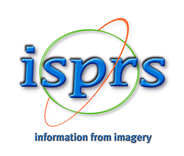|
"Optical 3-D Measurement Techniques" and "3D Virtual Reconstruction and Visualization of Complex Architectures" from 9th until 13th July By Dipl.-Ing. Axel Wendt, Robert Bosch GmbH The 8th conference on "Optical 3-D Measurement Techniques" (Optical 3-D) took place from 9th until 12th July 2007 at the Swiss Federal Institute of Technology (ETH) Zurich, Switzerland. The conference was organized by Prof. Armin Gruen, the Head of the Chair of Photogrammetry at the Institute of Geodesy and Photogrammetry (ETH Zurich) and Prof. Heribert Kahmen, the Head of the Chair of Engineering Geodesy at the Institute of Geodesy and Geophysics (Vienna University of Technology) and was sponsored by the organisations ISPRS, IAG and FIG. This was the 8th conference in a row. The first seven conferences were held alternately in Vienna and Zurich.
|
|
|
